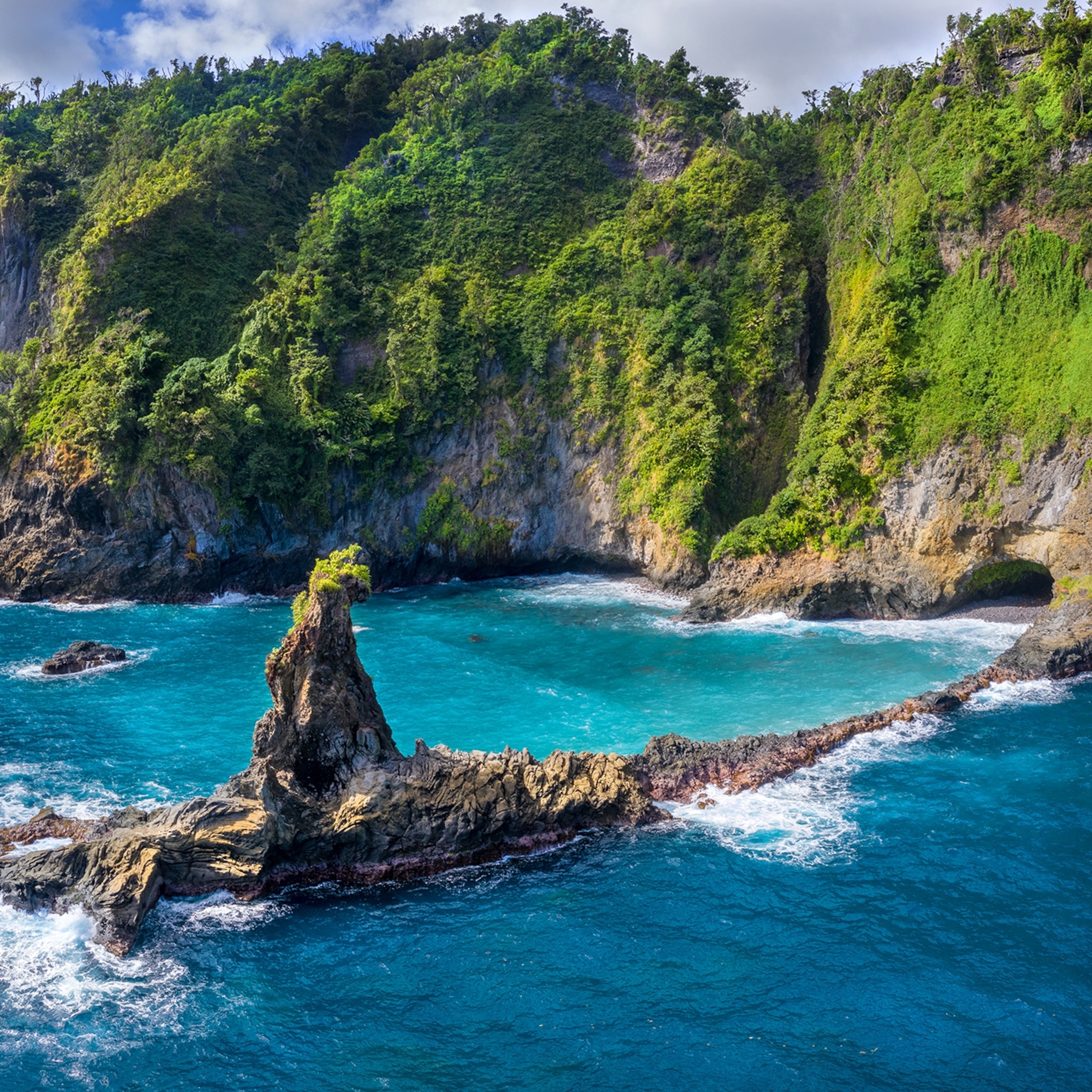
Japan Solar Energy Soars, But Grid Needs to Catch Up
Japan’s solar energy market now leads the world, thanks to a new incentive policy, but an inadequate and disconnected grid stymies power flow across the island nation.
Hokkaido, Japan's second largest and northernmost island, is known for its beautiful wild nature, delicious seafood, and fresh produce. Now another specialty is taking root: Large-scale megasolar power plants that take advantage of the island's unique geography.
A new renewable energy incentive program has Japan on track to become the world's leading market for solar energy, leaping past China and Germany, with Hokkaido at the forefront of the sun power rush. In a densely populated nation hungry for alternative energy, Hokkaido is an obvious choice to host projects, because of the availability of relatively large patches of inexpensive land. Unused industrial park areas, idle land inside a motor race circuit, a former horse ranch—all are being converted to solar farms. (See related, "Pictures: A New Hub for Solar Tech Blooms in Japan.")
But there's a problem with this boom in Japan's north. Although one-quarter of the largest solar projects approved under Japan's new renewables policy are located in Hokkaido, the island accounts for less than 3 percent of the nation's electricity demand. Experts say Japan will need to act quickly to make sure the power generated in Hokkaido flows to where it is needed. And that means modernizing a grid that currently doesn't have capacity for all the projects proposed, installing a giant battery—planned to be the world's largest—to store power when the sun isn't shining, and ensuring connections so power can flow across the island nation. (See related, "In Japan, Solar Panels Aid in Tsunami Rebuilding.")
Turning to Renewables
Japan historically has had no fossil energy sources of its own; it powered much of its economic growth over the past few generations with homegrown nuclear energy. At the start of 2011, more than 50 reactors provided Japan with 30 percent of its electricity, and the plan was to increase that share to 50 percent. That scenario was upended on March 11, 2011, when the most powerful earthquake ever to shake Japan touched off a tsunami that breached the defenses of Fukushima Daiichi nuclear power plant on the east coast. (See related, "One Year After Fukushima, Japan Faces Shortages of Energy, Trust.")
The second-worst nuclear energy accident in history displaced 70,000 people and saddled the nation with a long and difficult cleanup. (See Pictures: The Nuclear Cleanup Struggle at Fukushima.") The scope of the disaster was driven home for the Japanese people in recent weeks, when the plant operator acknowledged that it has been unable to stanch the daily flow of tens of thousands of gallons of radioactive water into the Pacific Ocean. (See related, "Fukushima's Radioactive Water Leak: What You Should Know.")
Due to opposition from local officials, all but two of Japan's nuclear power plants are now idle. And although Prime Minister Shinzo Abe supports a nuclear restart, his government also is addressing Japan's needs by administering a renewable energy incentive policy that went into effect last year before he took office: a generous "feed-in" tariff.
Modeled after laws that spurred clean power in Europe, it ensures that generators of renewable energy are paid above-market rates for their electricity. At 42 yen (43 U.S. cents) per kilowatt-hour for solar photovoltaic power, the rate is nearly twice what residential customers pay in Tokyo and is nearly four times the average in the United States.
The policy, launched in July 2012, spurred a diverse array of businesses to get in on the solar energy game. Electronics manufacturers Sharp and Kyocera and trading company Mitsui & Company have major projects open or under way. In July, financial services company Orix said construction has started for a 21-megawatt solar power plant on idle land inside the Tokachi Speedway circuit in Sarabetsu, Hokkaido, in a spot that boasts one of the highest levels of sunlight in Japan. Another banking firm, Japan Regenesis Trust, meanwhile, announced it had started operations of its one-megawatt "Smart Farm" in Urakawa Town, Hokkaido, on 5 acres (2.15 hectares) of land once used to raise horses. A leader in solar drive has been mobile carrier Softbank and its chief executive, the billionaire Masayoshi Son, who has advocated a total phaseout of nuclear power for Japan.
While FIT is available for other forms of renewable energy, more than 90 percent of the 1.662 million kilowatts of renewable energy capacity in Japan (as of February, the most recent tally) was solar, according to the Ministry of Economy, Trade and Industry (METI). Alternatives like wind and geothermal take much more time and money to develop, and solar does not require the lengthy environmental assessments needed for wind farms. METI statistics show that 11,012 megawatts of nonresidential photovoltaic projects have been approved between the start of the FIT policy and the beginning of this year, nearly half of them certified in February alone. The number likely rose due to a rush of last-minute applications before a 10 percent reduction in the FIT rate went into effect in April.
Domestic photovoltaic module shipments were up 271.3 percent compared to last year, according to the Japan Photovoltaic Energy Association. U.S. research firm IHS predicted the Japanese photovoltaic market would surpass Germany as the largest solar revenue market with 120 percent growth this year, installing more than 5 gigawatts of new capacity, with projects more than 2 megawatts in size being the major driving force behind the triple-digit growth rate. Bloomberg New Energy Finance predicted that such commercial and utility-scale projects would boost solar installations to a range of 6.1 gigawatts to 9.4 gigawatts in 2013, making Japan the largest solar market in the world after China.
Rush on Hokkaido
But there are concerns that dampen the solar euphoria. In April, regional utility Hokkaido Electric Power said its ultra-high-voltage transmission system, onto which large PV systems are interconnected, has received four times as many applications as it could handle. This situation, which has yet to occur in other areas of Japan, highlights the need to revamp Japan's electricity system soon if renewable energy is to maintain its recent momentum.
Japan's electricity system is comprised of ten grids with very limited interconnection. The ten regional utilities enjoy a monopoly on regional power markets, basically operating separate transmission networks independently and rarely supplying electricity to other utilities even if their service areas are adjacent. Further complicating the issue is a mismatch in line frequency: three of the ten grids covering eastern Japan, including Tokyo, use 50 hertz, while the seven covering western Japan use 60 hertz. Only three frequency converter stations are located on the boundary between the two regions, with the ability to convert less than one percent of the nation's power generation capacity.
While the FIT law obligates utilities to provide access to the grids and purchase all of the generated renewable power, there are provisions that allow them to restrict or deny access to ensure the stability of electricity supply. According to a survey of companies involved in solar projects by the Japan Renewable Energy Foundation, 20 percent of the respondents said they were denied access by local utilities due to overcapacity, while 37 percent were told there would be limits to the amount of electricity that the utilities could accept.
With regional utilities planning to put their nuclear power plants back online, there is speculation that grid capacity alone may not be the reason for Hokkaido Electric's decision to limit its purchases of renewable energy. Four of the ten utilities, including Hokkaido Electric, submitted applications this summer to have their nuclear facilities examined for safety review and restart under new guidelines set by the Nuclear Regulation Authority.
All are suffering losses due to skyrocketing fuel prices—mostly for natural gas—while the nuclear stations are out of operation. Paying above-market rates for renewables is an additional cost.
Softbank, which now operates five renewable energy plants and has plans for nine more nationwide, has learned its project to build three large solar power plants in Hokkaido with a combined capacity of more than 180,000 kilowatts is on hold, as Hokkaido Electric hasn't specified which of the applicants will be allowed to connect to the grid. Softbank founder and CEO Son has been openly critical: "There's no point in working to generate solar power if the utilities refuse to connect us," Son said in a video message to the Natural Energy Council in May. "It destroys the fundamental meaning of the (FIT) law."
Experts have also pointed out a sharp discrepancy between the number of applications approved and the number of projects actually started. Only 4 percent of the 11 million kilowatts of large solar facilities that have been approved actually had started operations as of February.
Trade ministry officials attribute the delay to a shortage of equipment due to the sudden burst in demand as well as the need to negotiate the grid access with the regional utility. But some believe that speculators have gotten into the business, applying early just to secure the high FIT price with the plan of reselling the "right to build a PV facility" later, when the government has lowered the official rate per kilowatt-hour. Domestic media report that METI is considering retracting the permits if the applicant fails to launch the business in a set period of time.
World's Largest Battery
To address the issue of integrating solar energy onto the grid in Hokkaido, METI said it has set aside 29.6 billion yen (US$294 million) to install a large storage battery at Hokkaido Electric's Minami Hayakita substation by March 2015 to stabilize the flow of solar power onto the grid. By installing the new battery, expected to be the world's largest with a storage capacity of 60 megawatts, the regional utility will be able to receive an additional 10 percent more electricity. (It would be nearly double the size of the largest battery currently operating in the world, at 36 megawatts, installed in 2012 in China to help integrate renewable energy onto the grid in Zhangbei, Hebei Province.) (See related quiz, "What You Don't Know About Batteries.")
But the installation alone provides no fundamental solution, and the ministry said it "will continue to ask business enterprises to seek locations other than Hokkaido for large-scale solar power plants."
Hiroaki Fujii, executive deputy president of SB Energy, Softbank's group company operating the renewable energy business, said the grid issue is not just the utilities' fault. "The government needs to show what direction it wants to take the nation's energy policy," he said. "Only then can the utilities make plans about future investment and the operators think about profitability and draw up business plans."
Since the Liberal Democratic Party returned to power late last year, Prime Minister Abe's government has dismissed the previous administration's aim to become nuclear-free by the 2030s. While the government launched a study in January to discuss the nation's energy policy, a clear vision has yet to emerge. But responding to public criticism of the utilities' virtual monopoly on the power industry, the Abe cabinet decided in April to separate the transmission division from the utilities beginning in 2018 at the earliest, a move deemed necessary to address the grid issue. The bill requires parliament's approval, however, and it was one of four pieces of administration-sponsored legislation scrapped amid political turmoil in Tokyo in June, when the Diet ended its regular legislative session by passing a nonbinding censure motion against Abe.
Trade Minister Toshimitsu Motegi said he will seek passage of the bill "without fail" in the next parliamentary session, but even if the bill were to be passed and a new power distribution organization established, Fujii warns that it wouldn't help the situation without transparency and a commitment to renewable energy. "There must be open discussion on what role this new transmission company is to play," he said.
The FIT law calls on the Trade Ministry to give "special consideration to the profits of renewable energy suppliers" for the first three years of the new tariff to promote the scheme. Once the current line of projects is completed, there are concerns that this solar boom would not last long, as tariffs would be further lowered and available land would become scarce.
Fujii believes otherwise. "The growth of solar business itself may slow down after three years, but Japan still has other resources, like wind and geothermal, and I don't believe the renewable energy business as a whole will shrink just because the legal provisions expire."
This story is part of a special series that explores energy issues. For more, visit The Great Energy Challenge.







